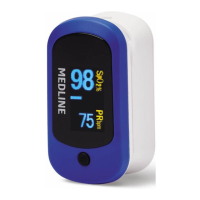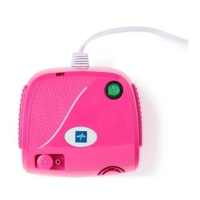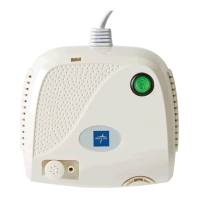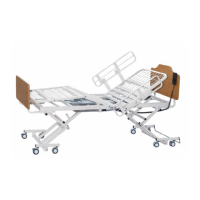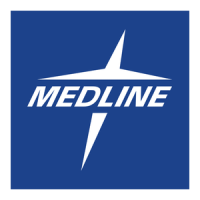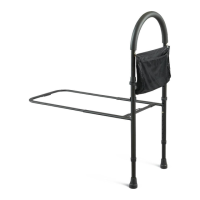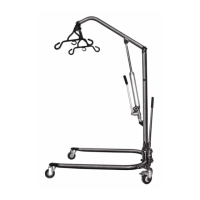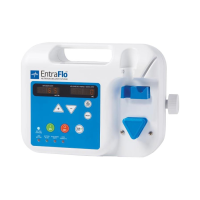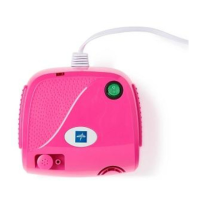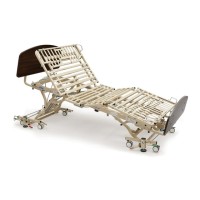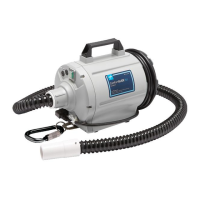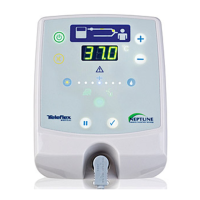
Do you have a question about the Medline HUDSON RCI Neptune ConchaSmart HUD42500 and is the answer not in the manual?
| Model Number | HUD42500 |
|---|---|
| Brand | Medline |
| Product Name | Neptune ConchaSmart |
| Category | Medical Equipment |
| Material | Plastic |
| Color | Clear |
| Connector | Universal |
| Sterility | Sterile |
| Packaging | Individually Packaged |
Respiratory humidifier designed to heat and humidify gases for adult, pediatric and infant patients.
Automatic operation, user-selectable modes, digital display, alarms, and self-diagnostics.
Illustrations showing how to connect the Neptune with conventional and heated-wire circuits.
Explanation of various symbols found on device labeling and in the manual.
Covers fire, burn, electrical shock, and short circuit hazards, plus power requirements.
Covers temperature probe placement and airway temperature verification.
Covers circuit use, tubing, tension, and skin contact.
Covers RF interference, equipment proximity, and cable use.
Covers unauthorized attachments, equipment compatibility, and tubing standards.
Covers reservoir clamps, probe environment, fuse replacement, and humidity.
Monitors condensation, checks, artifacts, and disposal procedures.
ConchaSmart contraindication and notes on standby, emissions, and reservoirs.
Details the main components of the heated humidification system.
Describes the standard Concha-Column operation.
Describes Low-Compliance, Comfort Flo, and ConchaSmart column features.
Airway temperature ranges, flow rates, humidity output, and warm-up times.
Minimum flow rates for adult, pediatric, infant/neonate, and continuous flow oxygen.
Water capacity, column compliance, and compressible volume for various columns.
Resistance to Flow, operating pressure, and circuit leakage.
Voltage, noise levels, operating conditions, and gas inlet temperature.
Dimensions, weight, storage, and electromagnetic compatibility.
List of applicable IEC standards for medical electrical equipment.
List of common accessories and their part numbers.
Description of all LEDs and icons on the front panel.
Explanation of Green, Yellow, Red status lights and their associated audio signals.
Indicators for pause mode, service issues, and low water notifications.
Explanation of Power, Mode Selector, and Temp/Pause controls.
Explanation of Gradient Display, Accept, Pause, Alarm Mute, and Console buttons.
Steps for mounting the humidifier and connecting power.
Installing the Concha Column, reservoir, and ventilator circuit.
Connecting dual thermistor probe and heated-wire pigtails.
Procedure for connecting the water reservoir to the column.
Steps to turn on the unit, perform self-check, and confirm settings.
Confirming settings, entering warm-up mode, and normal operation.
How to activate and use the pause feature for activities.
Procedure for safely changing breathing circuits.
How to change between Invasive/Non-Invasive modes and set airway temperature.
Explanation of positive, negative, and zero gradients and their effects.
How the low humidity advisory works and setting pause time.
Using High Output Mode to increase humidity with hot inlet gases.
Pre-setting temperature and gradient for invasive/non-invasive modes.
Covers display settings, alarm mute, power interruption, and incompatible circuits.
Use in anesthesia, incubators, warmers, and low-flow applications.
Effects of warm or cool environments on performance.
How to verify alarm function and common alarm conditions.
Details alarms like self-diagnostic failure, hot element, and short circuits.
Covers heated wire warnings, high patient temp, and probe errors.
Troubleshooting blank displays, no heating, and temperature range limits.
Checks for condensation, column, reservoir, and display.
Instructions for cleaning surfaces and routine checks.
How to obtain service, repair leased, or user-owned humidifiers.
Details what the one-year warranty covers and how to get service.
List of items not covered and limitations on liability.
Additional exclusions like serial number removal, cosmetic damage, and wear.
IEC standards for immunity and recommended environments.
Guidelines for RF communications equipment and magnetic fields.
IEC standards for emissions and suitability for various environments.
Specifications for power cords and breathing circuits.
